This guide will show you how to work out the optimum locations for wireless sensors and receivers that use the EnOcean wireless standard.
Getting started
Smart-sensor systems are the future of building management. They allow you to know exactly what’s going on inside your building – from how rooms and resources are being used, to how equipment is functioning, or what the conditions are – and automate controls based on real- time conditions.
There are several reasons why a wireless system is the easiest, most efficient way to go. Not only are they really quick and easy to install, they also give you flexibility, letting you scale up your system over time or reposition sensors to get the best results. With no need for wiring, they’re especially convenient if you’re retrofitting the system into an existing building.
Before you can install your system, however, you’ll need to spend a little time working out the
optimum locations for your sensors and receivers. And that means understanding a few basics about how wireless signals work. We’ll take you through the process step by step.
Planning using floorplans
1. Get copies of your building’s floorplans
The best way to plan your system is to confirm the RF performance on the site.
Estimations of coverage can be made using floorplans.
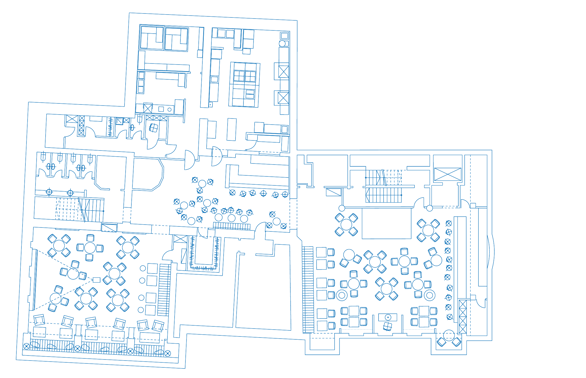
Tip: Make sure you know the scale they’re drawn to.
2. Shade the areas that will block radio signals
Radio waves can travel through some materials but not others. Metal and concrete are the worst, since they reflect the waves rather than letting them through. For this reason, fire-safety walls, lift shafts, stairwells and toilet blocks are all obstacles you’ll need to work around when planning your system. Shade in any areas like this on your floorplans.
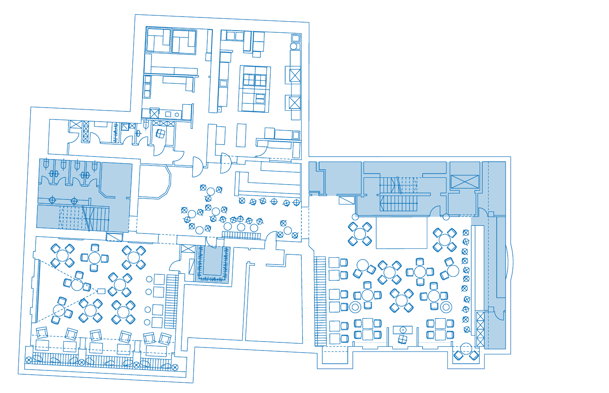
Tip: Sensors can still be used within poor signal areas but you will need to add gateways to provide coverage - the gateway positions and quantity will have to be confirmed during on-site testing.
3. Work out where to position gateways
EnOcean wireless range is up to 30m in buildings and 300m in free field. We recommend
assuming a signal range of 10 metres. This should ensure you get good enough coverage even in less-than-ideal conditions.
If you’re working with paper floorplans, you’ll need a compass. Using the same scale as the
floorplans, set the distance to 10 metres and draw a series of circles over the areas you want to monitor. Your gateways will be positioned in the centre of the circles.
Ideally, gateways should be close to the centre of the room, and at least 10cm away from the
corner of the wall or ceiling.
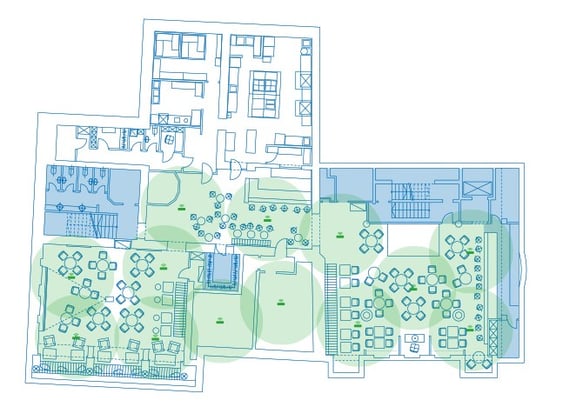
4. Add sensors and repeaters
There are a few things to bear in mind when you plan how many sensors you need and where
to position them. Firstly, radio signals travel in a straight line, so ideally you’re looking for a clear path (known as a line of sight) between the sensor and the repeater or gateway.
If the shape of the room makes this difficult, think about materials. Radio waves can penetrate most walls – they’ll just lose more or less signal strength depending on what the wall is made from.
| Material | Range reduction |
| Wood, plaster, uncoated glass | 0 – 10% |
| Brick, plasterboard | 5 – 35% |
| Metal, concrete, mirrors | 10 – 90% |
Angles make a difference too. Ideally, the angle the signal penetrates a wall should be as direct, or as close to perpendicular, as possible. The more of an angle the signal hits the wall at the further it has to travel, so you’re effectively making the wall thicker. If you think this could cause a problem you can either move the sensor or receiver or use a repeater to create a better angle.
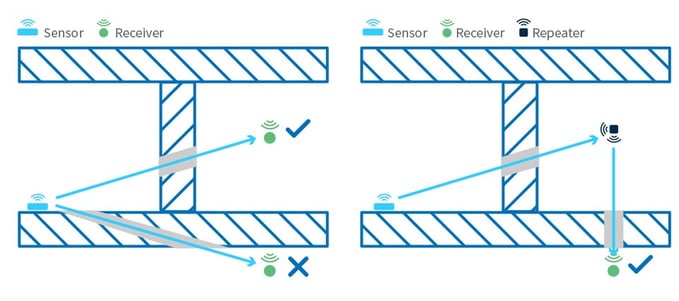
Finally, radio waves can be affected by interference or reflections if they travel along a wall, so we always recommend you position the sensor on a wall next to or opposite to the receiver.
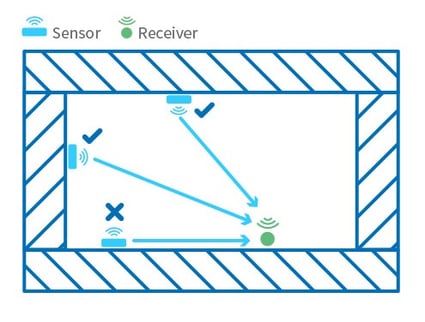
Tip: Sensors and receivers should not be on the same wall, if possible
Using repeaters:
Repeaters can be a good way of ensuring radio coverage in areas just out of gateway range. Installation of three or more standard repeaters can cause radio telegram collisions, however this can be avoided by using the Pressac selective repeater enabling telegrams from specific sensors to be repeated.
5. Install and test
Once you’ve looked at your floor plans and established where to put your gateways and repeaters, you need to do some on-site testing before installing your sensors.
Sometimes floor plans are out of date, or don’t show everything in a building. If you install your gateways purely on the basis of a floor plan you could end up with things like walls or pillars
blocking signals – which in turn, makes it seem the sensors aren’t working properly.
The best way to plan where to put your sensors, gateways and repeaters is in a ‘real-world
environment’, e.g. the place they’re going to be installed. You can use an EnOcean USB stick to turn your laptop into a pseudo gateway, to check each device is in range and has a strong signal strength. As you work your way around the room, you can improve any less-than-ideal conditions by adjusting the positions of sensors or gateways, or adding a repeater.
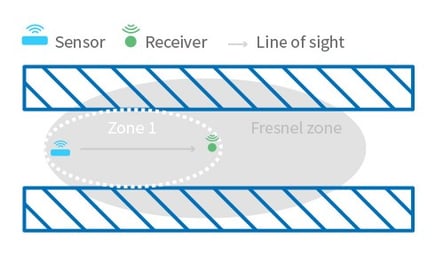
Extra considerations
Narrow corridors and low ceilings
Enclosed spaces aren’t great news for radio signals. Radio waves spread out at an angle from the sensor. If you could see the signal’s range it would be shaped like an ellipsoid – a bit like a rugby ball - called the Fresnel zone. When the signal hits a solid surface, it can reflect the signal and become “out of phase” reducing the power of the arriving signal, also called “phase cancelling”.
To avoid this, the receiver should be within zone 1 to ensure the strongest signal.
Sources of interference
The distance between EnOcean receivers and other transmitters (such as GSM, DECT or wireless LAN), or high-frequency sources of interference (computers, audio and video equipment) should be at least 50cm. However, EnOcean transmitters can be installed next to any other high-frequency transmitters without any problem.
